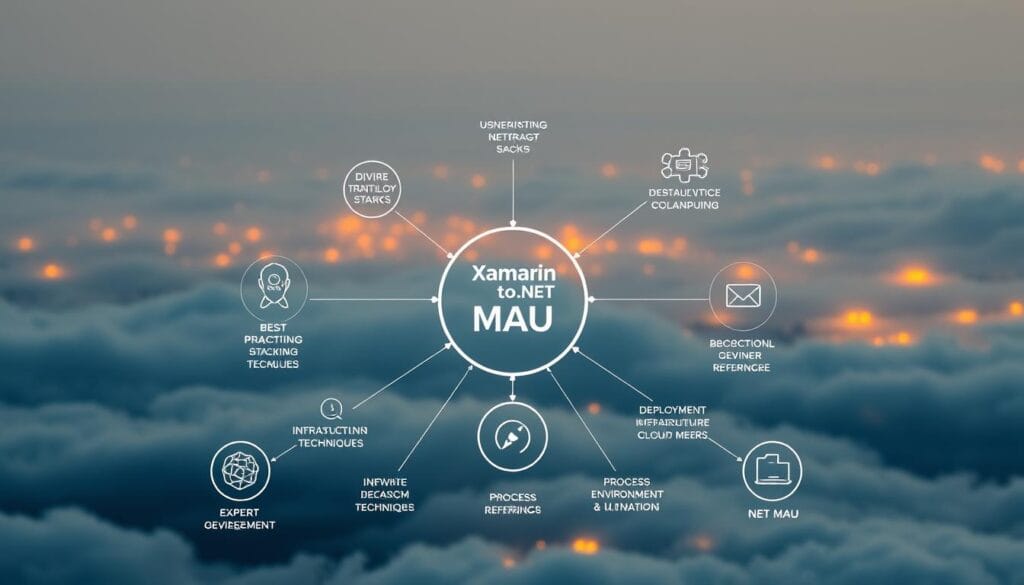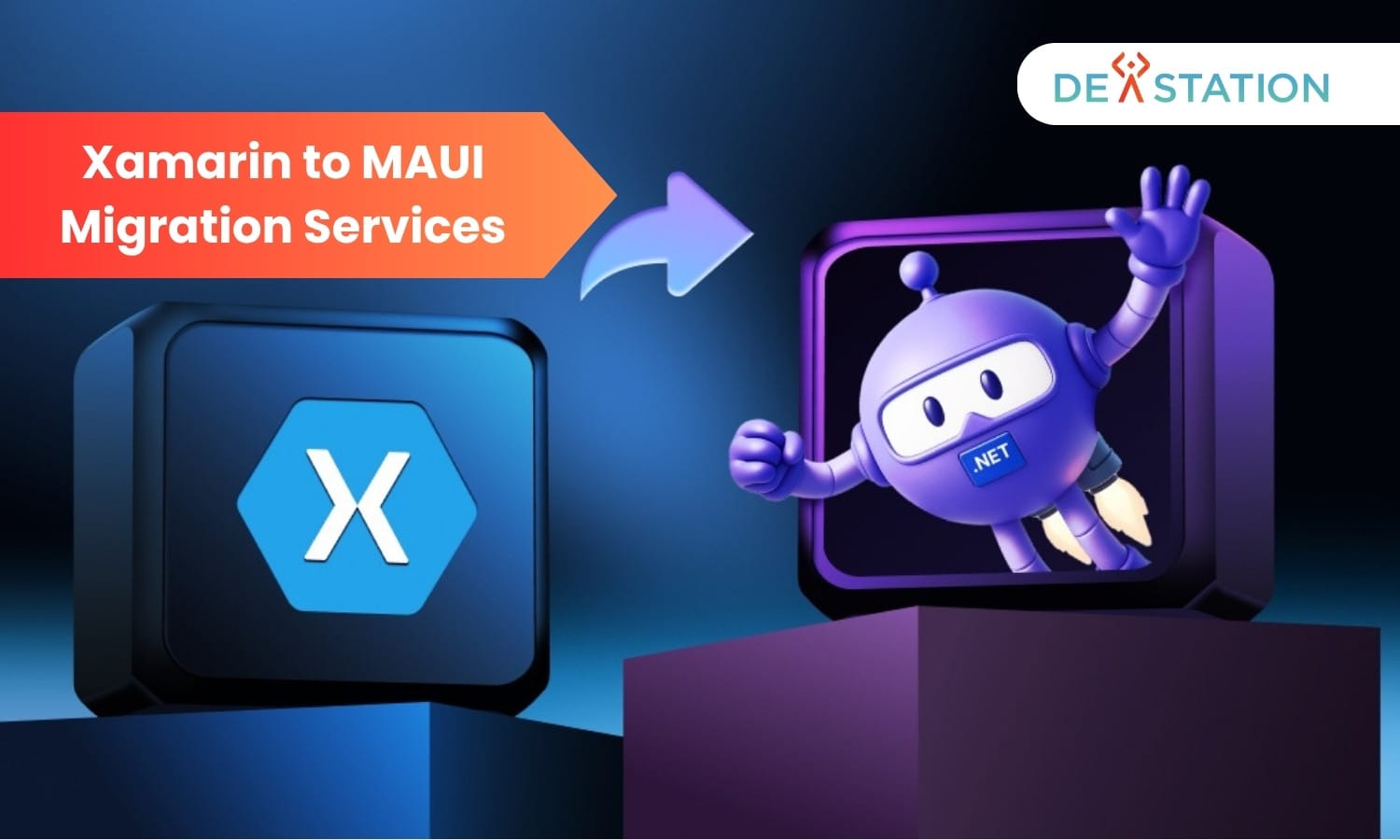Businesses face growing pressure to deliver high-performing applications across multiple platforms. Legacy systems often struggle with fragmented codebases and outdated tools, creating bottlenecks in app development cycles. A unified framework like .NET MAUI simplifies this challenge by enabling shared code strategies for Android, iOS, Windows, and macOS.
Specialized teams streamline the transition process through detailed assessments and strategic planning. This approach minimizes downtime while upgrading performance and scalability using the latest .NET 6 architecture. Companies benefit from reduced maintenance costs and faster deployment timelines, often cutting project durations by 50%.
Third-party tools like Telerik UI enhance efficiency with 60+ pre-built components, while Progress offers free trials to test solutions risk-free. Whether modernizing enterprise software or consumer-facing apps, structured transitions ensure compatibility with modern security standards and long-term platform support.
Contents
ToggleKey Takeaways
- Consolidate multi-platform code into a single maintainable solution
- Improve application responsiveness through optimized frameworks
- Access specialized teams for architecture evaluation and deployment support
- Reduce operational costs via streamlined development processes
- Ensure future compatibility with ongoing updates and security patches
Introduction to .NET MAUI Migration
Microsoft’s announcement about ending support for older cross-platform tools marks a turning point for developers. After May 1, 2024, applications built with outdated systems risk compatibility issues and security vulnerabilities. This shift makes adopting modern solutions critical for businesses aiming to maintain operational continuity.
Transitioning from Legacy Frameworks
Many organizations still rely on aging architectures that require separate codebases for each platform. These systems often lack features like real-time code updates or unified project structures, leading to inefficient workflows. Upgrading to a consolidated framework eliminates these bottlenecks.
.NET MAUI simplifies multi-platform app creation by merging essential tools into a single environment. Developers gain access to advanced features like hot reload and lightweight rendering engines. These improvements reduce debugging time and accelerate deployment cycles.
Outdated technologies also accumulate technical debt through complex dependencies and fragmented security protocols. Migrating allows teams to rebuild interfaces with modern design principles while integrating robust encryption standards. The result is software that performs seamlessly across devices without sacrificing speed or stability.
Professional guidance during this transition ensures minimal disruption to ongoing projects. Experts analyze existing codebases, identify compatibility gaps, and implement strategic upgrades. This proactive approach future-proofs applications against evolving industry requirements.
Why Migrate from Xamarin to .NET MAUI?
Modern app development demands frameworks that adapt to evolving user expectations. Legacy architectures often lack the agility needed for today’s multi-device ecosystems. Upgrading to contemporary systems unlocks enhanced functionality while future-proofing digital investments.
Superior Execution Capabilities
The latest frameworks built on .NET 6 demonstrate measurable gains in speed and resource efficiency. Benchmarks show 40% faster startup times and 30% reduced memory usage compared to older solutions. These improvements directly translate to smoother animations and quicker response rates.
| Feature | Legacy Systems | Modern Framework | Impact |
|---|---|---|---|
| Code Reusability | Platform-Specific | 90% Shared | Faster Updates |
| Memory Management | Manual Optimization | Automated Allocation | 30% Efficiency Gain |
| UI Rendering | Delayed Load Times | Instant Preview | 50% Faster Iterations |
Consolidated Development Workflows
Managing multiple platform-specific projects creates unnecessary complexity. A unified approach allows teams to:
- Maintain one set of business logic
- Standardize testing procedures
- Deploy updates simultaneously
“Teams using consolidated frameworks report 60% fewer merge conflicts and 45% faster release cycles.”
This streamlined process reduces debugging time while ensuring consistent behavior across devices. Integrated toolchains further accelerate workflows through real-time previews and adaptive layout systems.
Xamarin to .NET MAUI migration services
Structured migration processes separate successful transitions from costly overhauls. Specialized teams deliver end-to-end solutions that combine technical precision with strategic alignment. This ensures applications meet modern performance benchmarks while retaining core functionality.

A comprehensive approach begins with auditing existing architectures and dependencies. Teams analyze platform-specific implementations to identify compatibility gaps and optimization opportunities. This preserves critical business logic while eliminating redundant code patterns.
Interface modernization plays a vital role in adoption success. .NET MAUI enables adaptive layouts that maintain visual consistency across devices without compromising native features. Developers implement responsive design principles, enhancing usability through intuitive navigation systems.
Rigorous testing protocols validate performance under real-world conditions. Multi-device simulations check load times, touch responsiveness, and memory management. Security audits and compliance checks further ensure applications meet enterprise standards before deployment.
Post-launch support extends beyond initial go-live phases. Continuous monitoring tools track system health, while scheduled updates keep software aligned with platform changes. This proactive maintenance model reduces long-term operational risks and technical debt accumulation.
Strategic Migration Process and Best Practices
Effective transitions require meticulous planning across three phases: analysis, execution, and refinement. Teams achieve success by combining technical audits with adaptive workflows tailored to specific project needs. This approach minimizes risks while maximizing code reuse and system efficiency.

Comprehensive Codebase Analysis
Thorough evaluations identify reusable components and legacy dependencies. Experts examine UI structures, data flows, and security protocols to create actionable migration plans. This step often reveals opportunities to consolidate redundant logic and modernize outdated patterns.
Step-by-Step Migration Roadmap
A structured approach ensures predictable outcomes. Teams follow proven frameworks that balance speed with precision:
| Phase | Key Actions | Outcome |
|---|---|---|
| Assessment | Architecture review, dependency mapping | Clear reuse potential |
| Implementation | Component migration, logic adaptation | Unified code structure |
| Validation | Cross-platform testing, load analysis | Performance benchmarks met |
This phased method reduces downtime by 65% compared to unstructured transitions, according to recent industry studies.
Performance Optimization Techniques
Post-migration refinements unlock full framework capabilities. Developers apply:
- Memory allocation adjustments
- Asynchronous loading for UI elements
- Platform-specific rendering enhancements
“Optimized applications show 55% faster response times and 40% lower crash rates post-migration.”
Continuous integration pipelines maintain quality through automated tests and real-time monitoring. Regular updates ensure long-term compatibility with evolving platform standards.
Technical Expertise and Support for Your Transition
Adopting new frameworks demands more than basic coding skills—it requires deep architectural insight. Partnering with specialists bridges the gap between outdated systems and cutting-edge solutions. Their guidance transforms complex transitions into streamlined, value-driven processes.
Custom Solutions & Modern Tools
Every codebase has unique challenges. Teams analyze existing workflows to design tailored strategies that preserve critical logic while eliminating redundancies. Modern tools like real-time debugging interfaces and adaptive layout systems accelerate implementation without compromising quality.
Third-party integrations extend functionality through pre-built components for authentication, data visualization, and performance monitoring. These resources reduce development cycles by 35% while ensuring compatibility with evolving platform standards.
Dedicated Post-Migration Assistance
The journey doesn’t end at deployment. Continuous monitoring tools track system health, identifying bottlenecks before they impact users. Proactive updates address platform changes, maintaining security protocols and feature parity across devices.
Expert teams provide documentation reviews and staff training to maximize long-term ROI. This layered support model turns technical upgrades into sustainable competitive advantages, keeping applications agile for years ahead.





